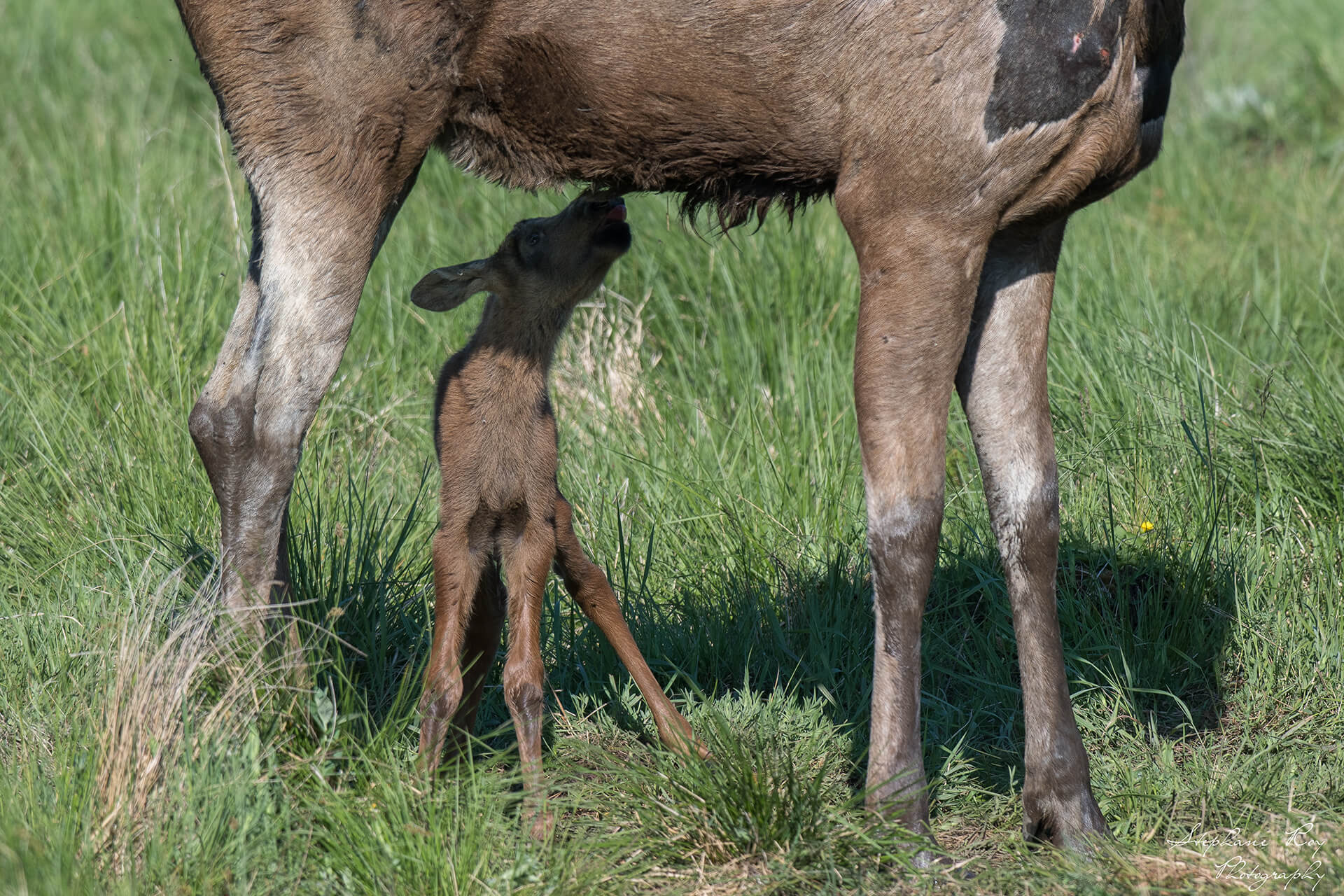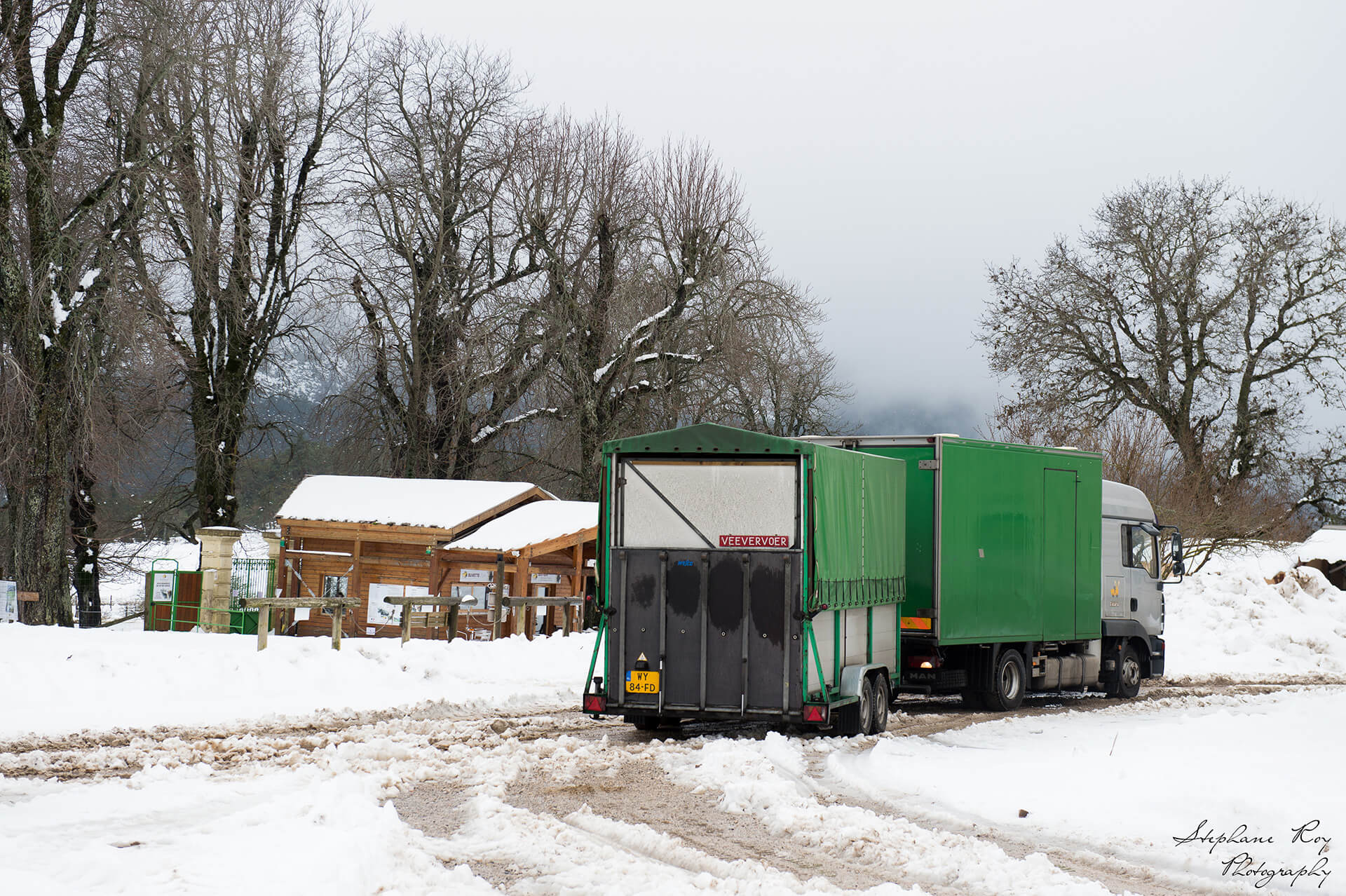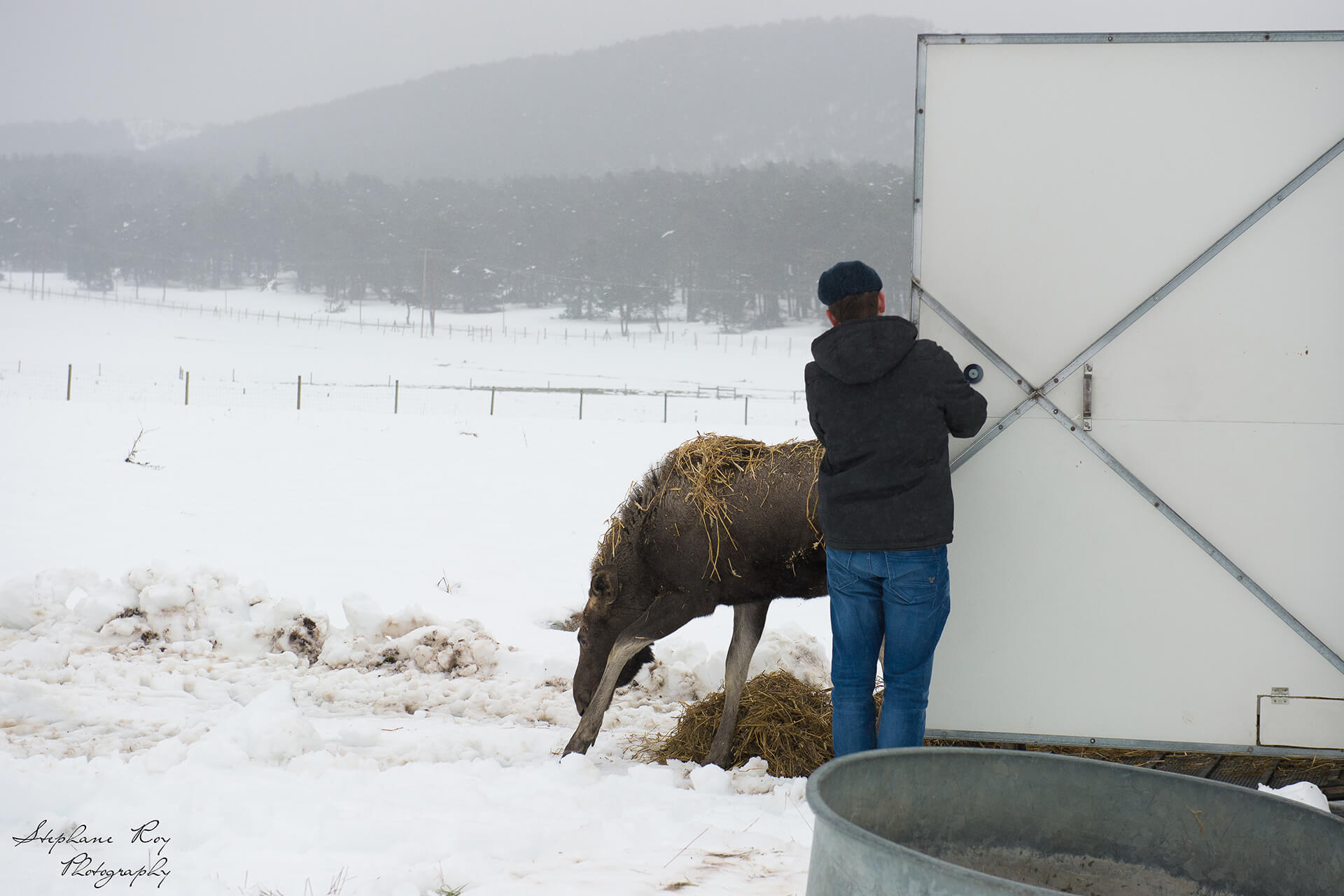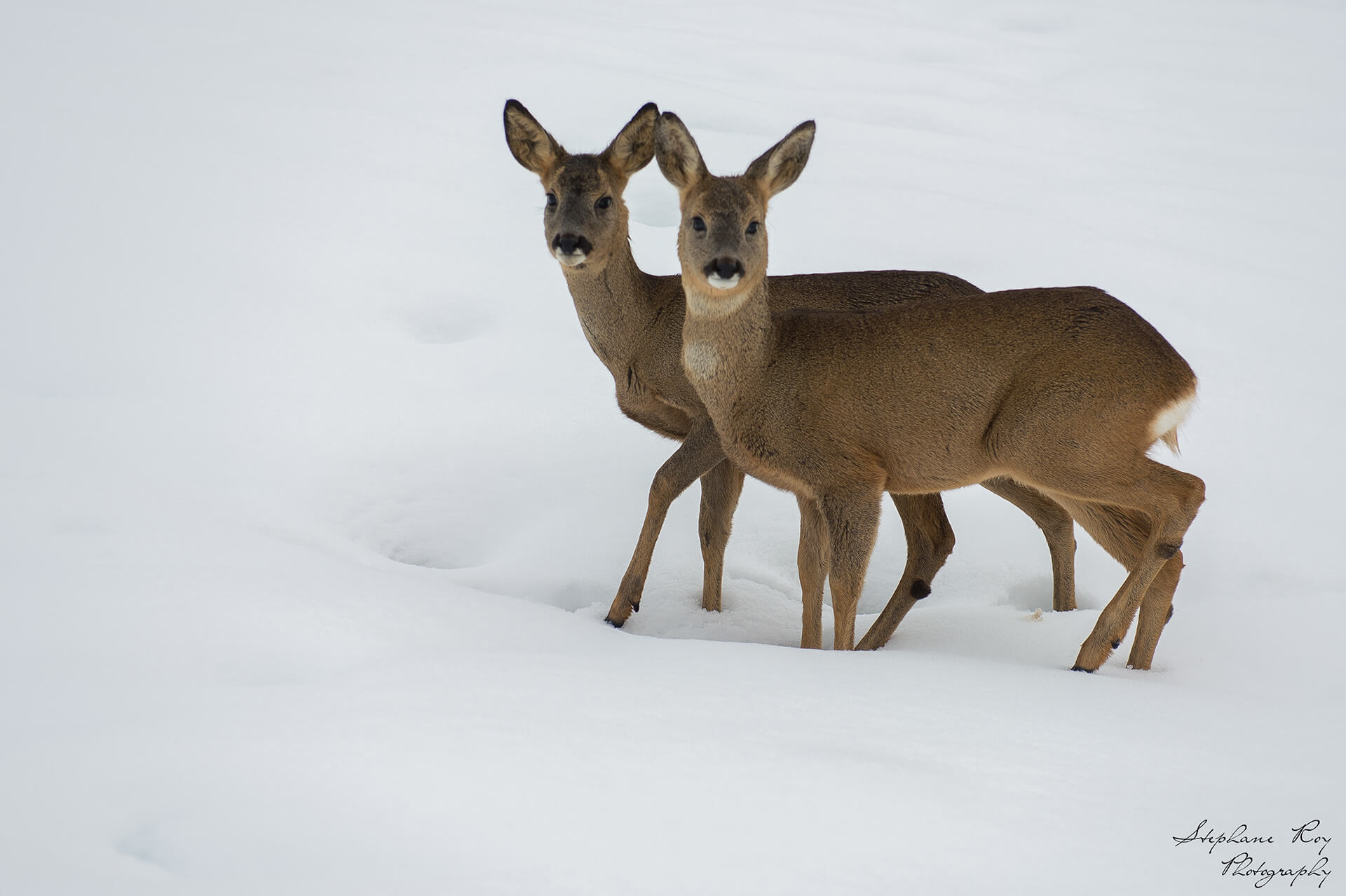L’Elan Alces alces
The appearance of the elk can be surprising. Its short body is carried by very long limbs. Large ears and an imposing bulging muzzle surround surprisingly small eyes. Its general appearance is a cross between a horse and a deer. In general, it uses the trot to move, but to flee a danger, it passes to the gallop which enables him to reach 50 km/h. Finally, let’s not forget its swimming skills which it uses to look for its food under water.
As far as clothing is concerned, he wears a very thick coat in winter. Now, let’s talk about the headdress. As with most deer, the male has proud antlers that sometimes reach two meters in length. In some places, they are flattened, which is a characteristic of the species.
A lonely life
What is the purpose of these rather heavy woods to carry and not very practical to walk in the forest? To show their virility, of course. As biologist Vince Crichton explains, the bigger they are, the more it shows females that he will be the perfect father for their children. More often than not, without even a fight, the most antlered male can expect a very successful rut.
Once the males are filled with love, or not, their antlers are no longer useful, except to clutter them up. They get rid of them between November and December. It is only in April, in spring, that they will start to worry about their love affairs with a regrowth of antlers. This regrowth is even faster than in deer. The speed can reach twenty centimeters every nine days. At the beginning of the summer, the males start to rub their antlers against the trees to get rid of their velvet, so from August, they display impressive brown pallets capable of making the ladies capsize.
It remains for the males to be perfumed. Between the end of September and the beginning of October, they dig small pits in the ground in which they urinate. Then they give vigorous blows of legs in the pit to project the urine on their antlers. The intoxicating scent that emerges triggers the ovulation cycle in the female.

Infested with aquatic environments
The elk prefers to live in wetlands where its large appetite makes it appreciate a wide variety of food for herbivores: grasses, aquatic plants, foliage and bark of many trees and shrubs, lichen, mosses … It nevertheless admits a clear preference for young branches, shoots and leaves of willows or birches in spring and summer. In winter, it can be satisfied with needles and bark of pines.
A newcomer in the acclimatization phase
The three females we present arrived from Sweden on November 21, 2019, while it was snowing. No doubt to avoid the disorientation!
They were temporarily placed in an adaptation enclosure in order to introduce them to the other species of the Reserve, but also to the visitors. From the start, our goats found these new arrivals … big, very big but friendly. They quickly got used to come and share their meal.


They were temporarily placed in an adaptation enclosure in order to introduce them to the other species of the Reserve, but also to the visitors. Right away our goats found these new arrivals … big, very big but friendly. They quickly got used to come and share their meal.

The buffalo were very intrigued by these newcomers. There were many exchanges during the winter, but it must be admitted that this mutual curiosity has gradually disappeared to be now only a polite indifference.
As for the Przewalski’s horses, they have once again confirmed their bad character, approaching the elks only to try to kick them!
In May 2020, a big surprise
Our three females found themselves quite lonely during the winter of 2019-20 because the husbands that we had found for them were stuck in their countries of origin because of Covid-19. Nevertheless, what was our surprise to discover on May 22, 2020, a tiny piece of cabbage of 50 centimeters high in the enclosure of the females! One of her having inevitably made a mistake before joining us… Armed with a bad temper, she turned into a sweet attentive mother.
